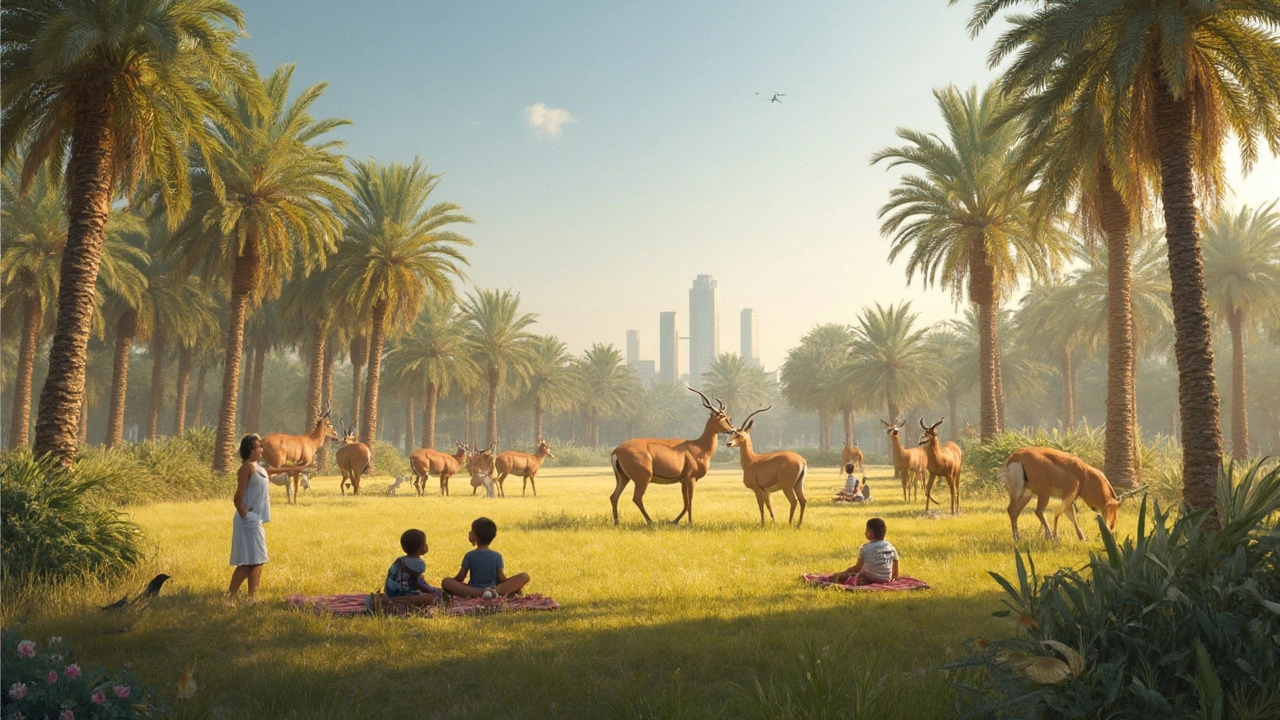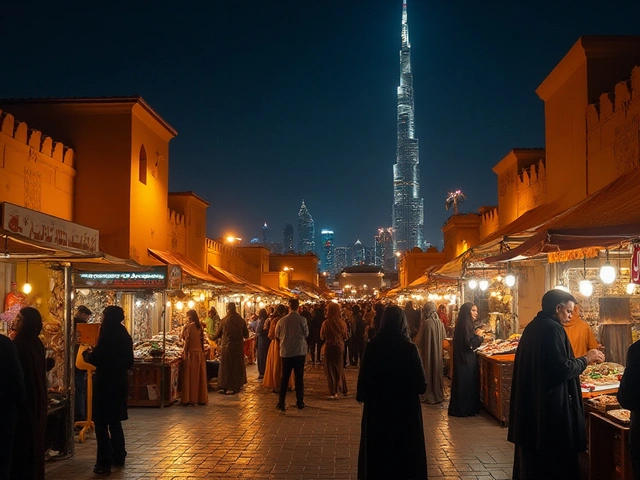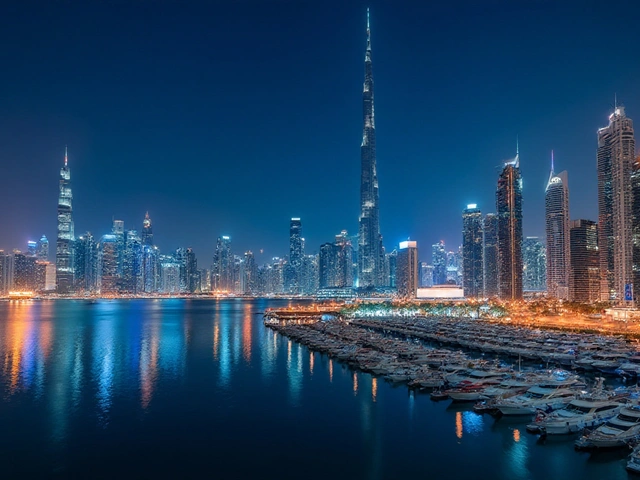Most people picture Dubai as high-rises and shiny malls, but take a closer look and you’ll find some wild surprises—literally. Hidden between the highways and the dunes, parks across Dubai shelter some of the world’s most unexpected animals. Think massive flocks of flamingos, curious Arabian gazelles, and even monitor lizards soaking up the sunshine. And the best part? You don’t need to leave the city to see them.
If you’re living in Dubai or just visiting, these spots aren’t your average stroll-in-the-park. Each one gives a close-up on nature that you honestly wouldn’t expect in a city known for man-made marvels. Locals know which months the flamingos arrive at Ras Al Khor and the secret spots where you can spot a shy sand fox at Al Marmoom, but most tourists zip right past. Save those tips—you’ll thank me during your next weekend plan or family outing.
- Ras Al Khor Wildlife Sanctuary: Flamingos Up Close
- Al Marmoom Desert Conservation Reserve: Arabian Gazelles and More
- Dubai Safari Park: Rare Species on Display
- Mushrif Park: Birds and Ghaf Tree Dwellers
- Jumeirah Beach Park: Coastal Marine Life
- Tips for Responsible Wildlife Watching in Dubai
Ras Al Khor Wildlife Sanctuary: Flamingos Up Close
You don’t need to leave Dubai to see hundreds—sometimes thousands—of flamingos in their natural element. The Ras Al Khor Wildlife Sanctuary sits right by the city’s busy roads, but walk into one of the free, air-conditioned hides and it’s like you’re on another planet. These hides are open from 7:30 AM to 5:30 PM, so you have loads of day hours to watch the action—best times are in the cooler winter months from November to March, when the flamingo numbers peak and the birds are most active.
This sanctuary protects a massive wetland area and is a big deal for wildlife in Dubai. It attracts over 60 species of birds, but the real stars here are the flamboyant Greater Flamingos. They show off their awkward ballet all winter, dipping their long necks for snacks. You’ll also see herons, osprey, sandpipers, and if you pay attention—mudskipper fish crawling along the bank.
Here’s what locals know:
- The main hides—Mangrove Hide, Flamingo Hide, and Lagoon Hide—are free to enter and don’t usually need reservations.
- Don’t forget binoculars (or your phone’s zoom), especially if you’re into birdwatching. There are free bird guides inside the hides.
- Stay quiet; sound carries across the water and the birds will spook easily.
- There are no cafes or shops, so bring your own water. Dress comfortably, and remember you’ll be walking some gravel paths from the parking lots.
If you’re hoping to impress visiting friends, mention that Ras Al Khor is one of the few places in the world where a city skyline meets a wetland teeming with wildlife. The juxtaposition is wild—skyscrapers in your rearview, wide-open wetlands up ahead, and flamboyant flamingos right in front of you. No wonder it’s a local favorite for Dubai parks that surprise everyone.
Al Marmoom Desert Conservation Reserve: Arabian Gazelles and More
If you ask a Dubai local about real desert wildlife, odds are they’ll drop the name Al Marmoom Desert Conservation Reserve. Just a 30-minute drive from the Mall of the Emirates, it’s not only the biggest unfenced nature reserve in the UAE, but it’s also quickly become known for its free-roaming Arabian gazelle herds. These gazelles aren’t behind fences—they're just doing their thing among the dunes.
The reserve covers more than 40,000 hectares, which is almost 10% of Dubai’s total land area. Over 150 types of birds, 10 mammal species, and plenty of desert reptiles call this place home. You’ll regularly see sand gazelles, oryx, desert foxes, and sometimes even the rare Gordon’s wildcat.
Can you spot all of the animals on a single visit? Not likely, but your best bet is to come early in the morning or just before sunset. That’s when wildlife is most active, and the desert heat isn’t as brutal. The walking and cycling tracks are flat and open, and you’ll find shaded bird watching platforms set up with telescopes—way more comfortable than baking in the sand.
"Al Marmoom Reserve is a shining example of how a modern city can protect its natural heritage while staying open to everyone." — Dr. Saif Al Shamsi, Dubai Municipality
Want numbers? Here’s what makes Al Marmoom stand out:
| Animal | Estimated Population | Best Viewing Time |
|---|---|---|
| Arabian Gazelle | Over 600 | Sunrise, Sunset |
| Sand Gazelle (Reem) | About 400 | Early Morning |
| Arabian Oryx | 200+ | Morning |
| Desert Foxes | Unknown, shy | Dusk |
You don’t need any permits to enter the main public areas, but stick to posted trails if you’re not joining a guided program. For families, there are shaded picnic spots and cycling rentals. Birders go nuts here—during winter, flamingos and over 100 other migratory species show up by the Al Qudra lakes.
- Bring water and a hat—the sun here does not play around.
- Use binoculars; animals tend to keep their distance from people.
- Please don’t feed the wildlife or leave any trash. Fines are hefty and the park rangers check.
- Early morning is best for spotting most animals and it’s way cooler anyway.
- If you’re into photography, golden hour lighting is wild—comes with minimal sand haze.
Al Marmoom isn’t your basic Dubai attraction. It’s one of those places where you’ll start to appreciate the side of the city most folks miss. Next time you want a break from malls, swap those shopping bags for sneakers and binoculars. You’ll see why locals are proud to call this patch of desert a Dubai parks highlight.
Dubai Safari Park: Rare Species on Display
If you want a wildlife experience in Dubai that goes way beyond flamingos or the usual zoo animals, Dubai Safari Park is the place to check out. This place is massive—spread over 119 hectares—and is home to more than 3,000 animals from around the world. The best part? Some of these animals are so rare, you can’t see them anywhere else in the UAE.
Dubai Safari Park is split into four main zones that mimic different ecosystems: African, Asian, Arabian, and the Explorer Village. Each is designed to feel a little like the animals’ natural homes. You can jump on a solar-powered safari vehicle for a close-up ride through open habitats, which is a hit for anyone who hates staring at animals behind glass.
Look out for:
- White rhinos: One of the park’s biggest stars. They're classified as near-threatened and are not easy to spot in most places worldwide.
- Arabian oryx: Once considered extinct in the wild, this elegant antelope is now the UAE’s national animal. The park is part of the oryx breeding effort.
- Siberian tigers: One of the rarest big cats, and Dubai Safari Park is one of the few places in the region you can see them.
- Pygmy hippos: Smaller and rarer than their big cousins, you can spot a few lazing in the water during hot afternoons.
- Komodo dragons: These giant lizards are native to Indonesia, so seeing one in Dubai is a real treat for reptile fans.
Here’s a quick snapshot of some rare species you’re likely to see and where you’ll find them within the park:
| Animal | Origin | Park Zone | Conservation Status |
|---|---|---|---|
| Arabian Oryx | Arabian Peninsula | Arabian Village | Vulnerable |
| Siberian Tiger | Russia/Asia | Asian Village | Endangered |
| White Rhino | Africa | African Village | Near Threatened |
| Pygmy Hippo | West Africa | African Village | Endangered |
| Komodo Dragon | Indonesia | Explorer Village | Vulnerable |
If you’re bringing the kids, the park’s Kids’ Farm is a favorite stop. There’s a petting zoo, pony rides, and a daily animal feeding schedule. Plan to visit earlier in the day or just before sunset, because most animals are more active when it’s cooler. Dubai Safari Park is only open from October to May, closing for the hottest summer months, so plan ahead. Book your tickets online to save time—Dubai residents and kids get discounts.
One last thing: Dubai Safari Park runs tons of educational talks and wildlife shows. Check the park’s daily schedule so you don’t miss the feeding sessions or keeper chats. It’s an easy way to learn how the park helps protect endangered species. Bring a hat, wear sunscreen, and carry water because there’s a lot of ground to cover. If you’re after a real-deal animal encounter in Dubai, this spot is as good as it gets.

Mushrif Park: Birds and Ghaf Tree Dwellers
Mushrif Park is a real goldmine if you love spotting different birds and checking out the local wildlife. This isn’t just another stretch of grass and palm trees—Mushrif is famous across Dubai parks for its ancient Ghaf tree forest. The Ghaf isn’t just the national tree of the UAE; it’s basically the backbone of the park’s ecosystem. You’ll see old, twisting trunks everywhere and, if you look up, dozens of birds making nests among the branches.
You might spot the Arabian Babbler or the hoopoe with its cool head feathers flicking around the walking paths early in the morning. There’s also the Indian Roller—bright, flashy, and easy to spot even if you’re no bird expert. If you’re lucky, you’ll hear owls hooting right before sunset, sometimes hanging out in the hollows of old Ghafs. For smaller critters, watch for reptiles darting across the sandy bits between the picnic tables.
Here are some tips for making the most of your trip to Mushrif Park:
- Go early or late in the day. Birds are most active at sunrise and just before sunset.
- Stick to the less crowded areas—the east side of the park tends to be quieter and better for wildlife.
- Bring binoculars if you can. Some of the rarer species, like the Eurasian collared dove or white-eared bulbul, blend in easily.
- Take your time under the Ghaf trees. The natural shade invites both birds and the occasional spiny-tailed lizard, especially during the hotter months.
Mushrif Park charges a small entry fee, but it’s worth it. Families also love the Aventura adventure park inside if you want to mix a bit of ziplining with nature watching. The wide paths are perfect for a casual stroll or a family picnic while you keep an eye out for the next feathered visitor.
Jumeirah Beach Park: Coastal Marine Life
If you think park wildlife stops at the trees, Jumeirah Beach Park is ready to surprise you. Right here in the heart of Dubai, this park offers a rare combo: city vibes up top, and coastal creatures down below. It’s one of the few spots where you can actually spot wild marine life without boarding a boat or heading to an aquarium.
Start with what’s most visible—the tidal zone. If you show up at low tide, you might see ghost crabs skittering across the sand, sometimes hiding near rocks and making a quick dash for the water. Dig around (carefully) near the shore, and you’ll notice tiny hermit crabs, loads of little shellfish, and, if you’re lucky, the occasional starfish stuck to a rock. Locals often bring their kids during the winter months for a sort of DIY exploration tour when the water’s clearer and the beach crowd is smaller.
What really makes Jumeirah Beach Park stand out is the chance to spot larger marine life close to shore. During late spring, dolphins have been seen swimming off the coast, sometimes from the actual swim zone. It’s not common, but it does happen—always a hit for those lounging at the beach early morning when the water is calm.
- Bring a pair of waterproof shoes or sandals for exploring shallow pools—broken shells and sharp stones can be rough on bare feet.
- If you have a child, keep a small bucket on hand for collecting and observing tiny sea critters (always release them after).
- Stingrays sometimes cruise the shallows, so shuffle your feet and avoid direct stepping—they’re not aggressive, but you don’t want to surprise them.
- The park prohibits fishing, so keep any netting or fishing rods at home. Stick to watching and gentle exploring.
Want a closer look at marine life without getting wet? The walkways and shaded spots let you observe seabirds like terns and sandpipers, especially early morning when things are quieter. Occasionally, turtles will surface near the rocks along the outer edge—binoculars help if you’re hoping to spot one.
While Jumeirah Beach Park is more compact compared to some other Dubai parks, it punches above its weight for urban wildlife. For anyone wanting a little sea adventure without leaving the city, this park is a prime Dubai parks pick. And since the park’s reopened after its upgrades, the facilities—clean restrooms, shaded seating, and snack stalls—make it easy to spend a full day at the beach, even in the warmer months. Just don’t forget sunblock. That Gulf sun is no joke.
Tips for Responsible Wildlife Watching in Dubai
Wildlife watching in Dubai isn’t just about the thrill—you need to respect both the animals and the environments they call home. Some of Dubai’s best parks have simple rules, but a bit of local know-how helps keep things safe for everyone. Messing around with protected habitats or careless behavior can get you in trouble; Dubai Municipality has handed out fines for off-path walking or feeding wildlife in places like Ras Al Khor. To keep your next trip smooth, here’s how to do it right:
- Dubai parks—especially official wildlife sanctuaries—usually have boardwalks and marked viewing areas. Stay on them. It’s not just for your safety; it’s what keeps the animals from getting stressed or spooked.
- Feeding wild animals isn’t just unnecessary, it’s banned. Food can make birds and mammals sick, and some parks (like Dubai Safari Park) have fines starting at AED 500 for breaking this rule.
- Keep your voice low, especially around bird hides and observation decks. Birds remember disturbances, and studies from Ras Al Khor found a big drop in flamingo feeding when people were loud.
- No drones—unless you have written permission from the park and local authorities. Drones bother nesting birds, and Dubai Civil Aviation Authority takes this seriously.
- If you’re visiting with kids, keep them close and explain why it’s cool to watch, not chase.
- Even empty bottles or snack wrappers mess up the delicate ecosystem. Use the bins at park entrances or take your rubbish with you.
Curious about what’s actually at stake if you break park rules? Here’s a quick breakdown of typical fines and park hours to keep in mind:
| Location | Fine for Feeding/Disturbance (AED) | Park Timings |
|---|---|---|
| Ras Al Khor Wildlife Sanctuary | 500+ | 7:30am – 5:30pm |
| Dubai Safari Park | 500-2000 | 9:00am – 5:00pm |
| Al Marmoom Reserve | Up to 1000 | Open all day |
Want great photos? Most parks allow cameras and binoculars, just skip flash and loud camera modes. Early morning or just before sunset is when Dubai’s wildlife is most active—you’ll get better sightings and the light is far easier on both eyes and camera.
If you’re unsure about park rules, look for info boards at entrances, or ask one of the many security staff—they know their stuff and will usually share a tip or two to help you spot something rare. Bottom line: respect the space and animals, and Dubai’s parks will keep surprising you with what shows up next.








